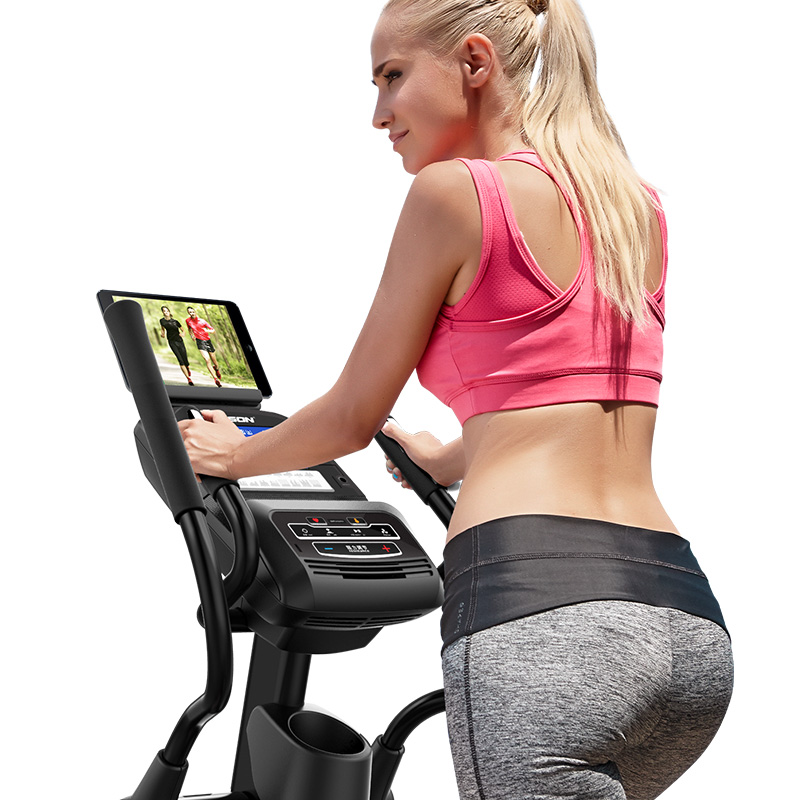Why do you need to activate muscles before exercising?
The coach always asks the people to activate the muscles before fitness, but some people equate the muscle activation with the warming up. It takes more than 10 minutes to run and warm up before fitness. But when we do strength training, we actually need to do some related muscles relax and activate.
What is muscle activation?
In fact, the term “activation” refers to stimulating muscles so that they can better exert their strength and functions.
Muscle activation means: awakening and activating the proprioceptors in the muscles, thereby adjusting the working state of the muscles, and improving the awareness and movement of the muscles.
Muscle activation does not only exist in the warm-up phase, in fact it can run through your entire training process.
Why do muscle activation?
Muscles have contractility and toughness. Inactive muscles are mainly manifested in muscle shortening, hyperextension, lengthening, and atrophy, which affect the effect of fitness.
01 The body exerts force compensation in order to maintain balance
No matter whenever, our body must maintain balance. In daily life, some of our bad habits, bad standing and sitting posture will cause our muscle strength to be imbalanced. Some muscles remain tense all year round and over-participate in physical activity. At the same time, there will be some muscles that should be involved in activities but have been lazy for a long time.
For example, the abdominal muscles and erector spinae maintain our core balance. Taking a sedentary party as an example, sitting for a long time every day, the abdominal strength is insufficient, and you will not use the abdominal force and forget the abdominal contraction function, so in order to maintain the balance, it is necessary to use the erector spinae muscles of the back to withstand greater pressure.As time passes, the waist cannot stand, also cause lumbago.

02 Poor joint compensation due to insufficient muscle tone
Muscles are flexible and resilient. However, some long-term postures cause muscle hyperextension or shortening, which will reduce its tension. The direct consequence is that the joints involved in the under-tension muscles have insufficient flexion and extension capabilities.
Taking the sedentary people as an example, long-term sitting causes the iliopsoas muscles to be compressed, and the hip muscles and hamstrings are elongated. The muscle tension in these two parts is insufficient, which ultimately leads to insufficient hip flexion ability. When doing squats, in order to squat down, the lumbar spine compensatory bends, causing the pelvis to turn over, which is easy to cause back pain. The heavier the weight, the greater the damage to your lumbar spine.

Just like when we lift heavy objects, the best way is to squat down and lift heavy objects. Some people have insufficient hip flexion ability and can only bend over to lift heavy objects, which will cause damage to the lumbar spine.
03 Incorrect muscle power, the training effect is greatly reduced
Compensation also reduces the stimulation of the target muscle, and some muscle balance is lost.
For example, the dumbbell fly did not exercise the high deltoid muscle, but the upper trapezius muscle got more exercise, which led to its abnormal development.
For another example, when you sit for a long time, the buttocks are loose and there is no sense of strength, the leg muscles will replace the buttocks, causing the leg muscles to be used too much, so when many girls go to practice the buttocks, only the thighs can feel, but the buttocks are basically not get it, the last is fat legs without buttocks.

How to activate muscles in different conditions?
Muscle inactivation is usually manifested in muscle shortening, hyperextension, lengthening, and atrophy. In response to different problems, the muscles are effectively activated.
Stretch and massage the tight and shortened muscles to restore their proper length and toughness, such as stretching the iliopsoas with long lunges, stretching the erector spinae with Dabai, and massaging the calves.
Perform isolation training or static training on excessively elongated muscles to restore the muscles to their original state, such as stimulating the buttocks muscles with the glute bridge, V-shaped support, and curling to stimulate the abdominal muscles.

Many people use 20 minutes to activate their muscles before training. Don’t look at the warm-up and just the seemingly useless movements, but just because these movements protect your joints and protect your muscles, so take care to spend some time on muscle activation and you will get unexpected results.





Leave a Reply
Want to join the discussion?Feel free to contribute!